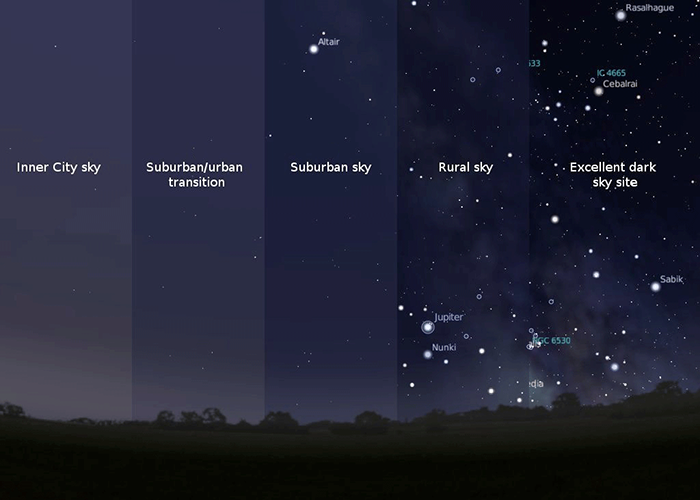Planetarium Education™ - K12 Utility
Astronomy is no doubt one of the most interesting subjects for students. They simply love it. It has universal reach, appeal and applicability.
"Twinkle twinkle little star,
How I wonder what you are"
How I wonder what you are"
Star gazing is an exhilarating experience. Our fascination and inquisitiveness with astronomy starts right from Kindergarten onward. The mesmerizing night sky has always been a source of inspiration to story tellers, poets, philosophers and last but not the least scientists.
Astronomy is a subject that students simply love but it is not being taught in schools.
In today's modern world, unfortunately we live in starless cities as light pollution in cities simply makes the stars invisible from the night sky. Light pollution, skyscrapers skyline and lifestyle deprive city dwellers especially the students from some of the simplest yet fascinating observations of nature like:
- Counting dot stars that one sees with the naked eye and ponder - whether the universe is abysmal?
- (Remember! one sees about 3,000 stars at a time with the naked eye and that too from a dark place away from city lights).
- Observing stars as they change their position in our skies season after season and as they do so they also repeat themselves year after year thus making us ponder - can there be something in nature that is eternal?
- Observing colours in stars (stars just like flowers come in different colours) and ponder - can stars' colours be related to the colours of a candle flame?
- Identifying stars by their comparative brightness and ponders - what keeps a star glowing or are they simply glow worms embedded in the night sky?
- Making stick figure drawings (ancient constellations) by joining bright and colourful stars with standing, sleeping and slanting lines and imagining all sorts of stories in the night sky just like our forefathers did the world over.
- Observing the white band (Milky Way galaxy) running across the sky and ponder - what it really can be?
- Observing the sun rise and set and ponder - why it changes its path in our sky season wise?
- Looking at an eclipse and ponder - is it a hand of God or just a game of shadows?

The stars, the beauty of the night sky and inquisitiveness associated with it has disappeared from our life primarily due to light pollution and our life style.
Well! We all can identify and classify many things that we see around us. In fact from Kindergarten onward we are taught to identify an endless list of things like fruits, vegetables, flowers, animals, monuments, etc. By the time a child finishes Kindergarten he can identify a penguin and a whale though the chance of actually seeing them live even in a zoo is minuscule. By the time a student finishes middle school he has probably seen bacteria through a microscope and has an idea of the micro-cosmos that exists around him even though if he cannot see it with his eyes directly. Now what about the night sky objects that are very much part of our day to day environment? One will hardly find a student or a teacher who can identify a planet or a star or a constellation or a deep sky object in real sky - real time. And what about the most famous star - the pole star? Very few students/ teachers have ever seen a celestial object through a telescope. Even if they had it was hardly for few seconds (perhaps in a public watch).
There is a conspicuous ignorance about the night sky among students as well as their teachers.
The reason for the conspicuous ignorance of the night sky (poor astronomy literacy level/ Download Test ) among students as well as their teachers the world over is due to the inherent practical limitations/ impediments associated with star gazing. The reasons are:
- Observations are to be done outdoors and in night time sky.
- Celestial objects, constellations and astronomy events like eclipses, occultation, etc. are date, time and place dependent. They may or may not be visible from your city.
- Weather may act as a spoil sport even at the eleventh hour.
- Simplest of observations of the heavens above takes days, weeks, months, years and even much longer.
- To make the matter worse light pollution makes stars invisible in cities' night skies and they cannot be seen even with a telescope.
- And last but not the least a two dimensional surface (Cartesian) like a blackboard / computer screen cannot represent the sky above our head which has dome shape (Polar).
These limitations are overwhelming and have conspired to deprive students the world over of even the simplest but exhilarating experience of Astronomy like finding Pole Star or watching an eclipse or our home galaxy Milky Way. The curiosity that starts in mind and heart of a child at Kindergarten totally dies out by the time he finishes his 15 years of schooling.
The reasons for lack of astronomy literacy among the students in spite of being a lovable subject are due to the inherent practical impediments associated with star gazing.
Read More...
Read Less...




